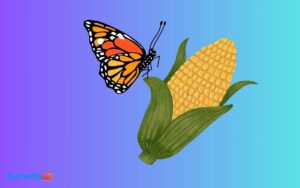Migration of Monarch Butterflies in Mexico: Key Routes!
You’ll find Monarch Butterflies migrating up to 3,000 miles to Mexico’s oyamel fir forests, starting in late summer. They travel about 50-100 miles per day, guided by geomagnetic cues, the sun’s position, and genetic programming.
These high-altitude forests, located at 2,400-3,600 meters, offer the perfect microclimate with high humidity and cool temperatures.
Monarchs cluster to reduce heat loss and use stored lipids for sustenance. Conservation efforts focus on reforestation and combating habitat loss due to deforestation and climate change.
Continue to explore to uncover in-depth analysis on their impressive journey.

Key Takeaways
Journey Overview
The migration journey of monarch butterflies to Mexico spans thousands of miles, showcasing their remarkable navigational abilities and endurance.
You’ll be amazed to learn that these butterflies travel up to 3,000 miles from North America to the oyamel fir forests in central Mexico.
This journey starts in late summer and early fall, with monarchs averaging 50-100 miles per day. Their flight altitude ranges between 50 and 100 feet, and they can cover 80 miles in a single day if conditions are favorable.
The entire migration process involves multiple generations, with each butterfly living about 2-6 weeks, except for the final generation, known as the “Methuselah generation,” which can live up to 8 months, enabling the round trip journey.
Navigational Cues
Understanding how monarch butterflies navigate such vast distances involves examining the sophisticated cues they utilize, including the Earth’s magnetic field, the position of the sun, and polarized light patterns.
These complex mechanisms guarantee their precise orientation and direction throughout their migration journey.
Research has identified several key navigational aids:
- Earth’s magnetic field: Monarchs detect geomagnetic cues through magnetoreceptors, aiding in long-distance travel.
- Sun compass: They use the sun’s position relative to time of day, adjusting their internal circadian clock.
- Polarized light patterns: Under overcast conditions, they rely on light polarization for guidance.
- Genetic programming: Inherited traits guide their innate migratory behavior.
- Environmental landmarks: Familiar terrain features assist in navigation accuracy.
Such detailed understanding showcases monarch butterflies’ remarkable navigational capabilities.
Destination in Mexico
Monarch butterflies’ migration culminates in the oyamel fir forests of central Mexico, where they find the ideal microclimate for overwintering.
These forests, located at elevations between 2,400 and 3,600 meters, provide cool temperatures and high humidity, essential for conserving the butterflies’ energy reserves.
Data shows that these conditions reduce metabolic rates, allowing monarchs to survive on stored lipids. The dense canopy of the oyamel firs offers protection from harsh weather, while the forest floor provides roosting sites.
Studies indicate that the specific altitudes and forest composition play a critical role in their survival.
Survival Strategies
Survival strategies for monarch butterflies hinge on their ability to exploit specific microclimates and energy conservation mechanisms during their overwintering period.
They cluster tightly in oyamel fir trees to maintain ideal temperatures and humidity levels, minimizing metabolic rates and energy expenditure, vital for surviving until spring.
Monarchs also utilize lipid reserves accumulated during their larval stage.
Key strategies include:
- Clustering behavior to reduce heat loss.
- Selecting high-altitude forests for stable microclimates.
- Entering a state of reproductive diapause to conserve energy.
- Using solar radiation to warm up and remain active.
- Relying on stored lipids for sustenance during non-feeding periods.
These tactics are essential for enduring the challenges of the Mexican highland winter.
Conservation Efforts
Given the monarch butterflies’ intricate survival strategies, you’ll find that conservation efforts are heavily focused on preserving their critical overwintering habitats in Mexico.
Key actions include reforestation and habitat protection. Data shows that habitat loss is primarily due to deforestation and climate change.
Efforts to mitigate these include:
| Conservation Strategy | Description |
|---|---|
| Reforestation | Planting native tree species to replace lost forest areas. |
| Habitat Protection | Implementing legal measures to protect existing habitats from deforestation. |
| Climate Research | Studying climate impact on overwintering sites to inform adaptive strategies. |
Conclusion
You might think monarch butterfly migration is just a natural occurrence, but it’s a fascinating, data-driven marvel of nature.
By understanding their journey, navigational cues, destination, and survival strategies, you can contribute to conservation efforts.
Don’t underestimate the impact of human intervention; it’s essential for their survival. Your awareness and support can guarantee that future generations witness this incredible migration.
Let’s work together, using science and data, to protect these extraordinary creatures.






